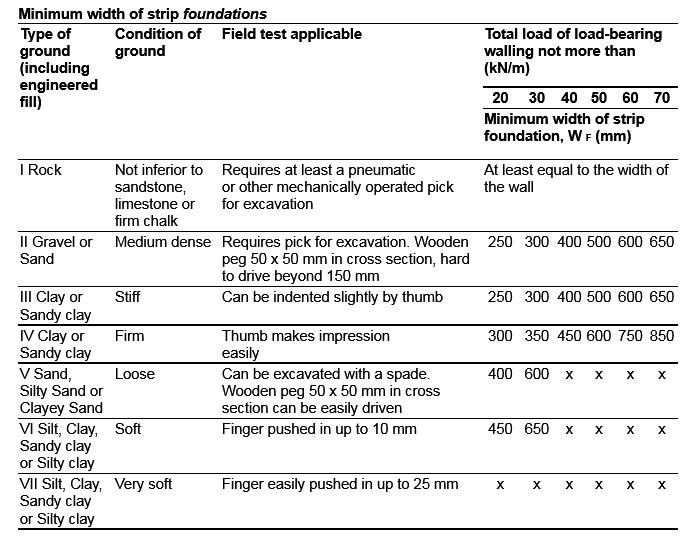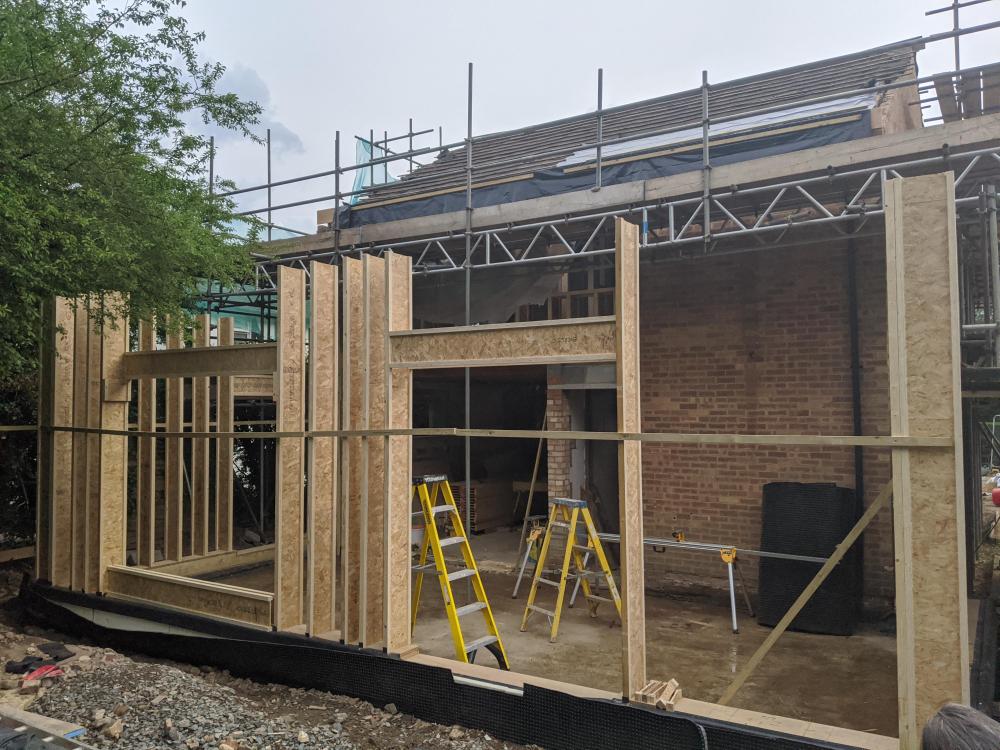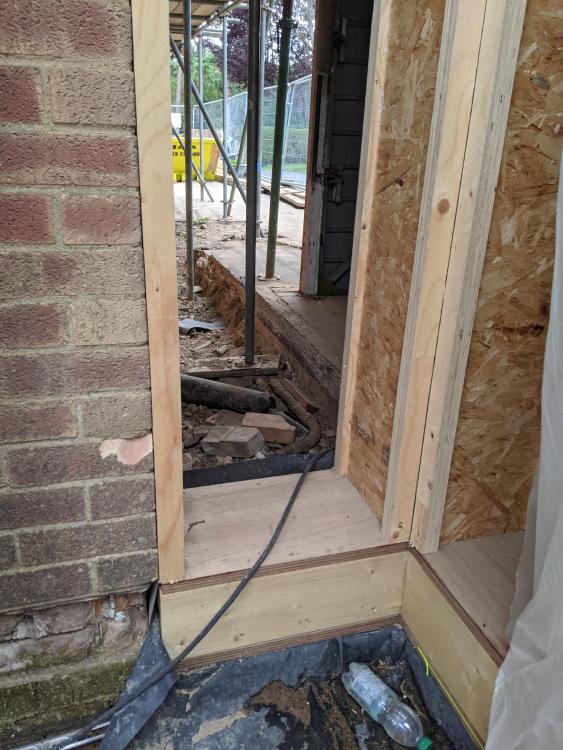Leaderboard
Popular Content
Showing content with the highest reputation on 08/10/20 in all areas
-
My wife is American, which I feel explains things without adding anything else. I explained that we could save £20 a year if we switched off the pool lights at the socket. I got a blank expression that said why are you wasting my time with this. Her view is that if you can afford it why would you care. My view is I will spend lots of money on things that I enjoy, I consistently take loads of family members on holiday with us. But I also enjoy saving money and not wasting it. Everyone is different. We’d all be a lot happier if we accepted that. I try very hard not to give people unasked for advice. No one ever takes it, it just winds them up. Live your best life and don’t get involved if you don’t have to. Ironically that is advice!3 points
-
There's a learning point there. You are doing a sequential process - to fit your normal way of thinking / working. That is fine, but the risk is that you lose the links eg between the plan and how it can vary with different glazing types and positions etc. An architect might work more from a sketched network of room links and positions relative to the aspects etc, and then evolve it as an overall vision. Be sure that you go forwards and backwards enough times to make the links. If you are just a few feet in front or behind your neighbours for part of the width that means that you can get beams of direct sunlight much later or earlier in the day through a tiny bit of side aspect exposed round the end of next door. Ferdinand2 points
-
There could be a number of reasons of which could relate to the structural, fire safety or thermal efficiency. If you have proof the conversion works were done in 1995, you should be able to get away in complying with the Building Regulations at the time as opposed to the current BR’s. You would require a visit from some kind of professional... an architect/designer or Building Control but bearing in mind the latter (as mentioned above) could open up a can of worms. Another possible reason could be if the conversion works required Planning approval. While the majority can be carried out under PD, there are certain rules and restrictions with PD. If it didn’t meet those requirements and the works required formal Planning, then Local Planning polices would kick in, in terms of off-street parking, overlooking, etc... Similarly to the BR situation, if you can prove the works were carried out in 1995, then you’d need to check the PD rules at the time. Although saying that, you could just pursue a Certificate of Lawfulness as it’s been there for 15 years.2 points
-
Hi, I’m Simon! l live in an ongoing project - an 1843 church conversion. Been here 8 years now - it was converted when we bought it, and I’ve been redoing it ever since. Stumbled here while researching some stuff about MHVR as I’m trying to improve the current system during renovations on the basement level. I have a few questions on that, but will ask those separately! pleased to be here - looks a helpful community! Simom1 point
-
On my own self build journey I have learned to mellow out a bit. There is the way you expect things to be done and then there is the way that things are done. The disconnect between the two caused me a lot of angst during the early stages. If it works, it works. Dont get too hung up on the how, let them do what they do, if the house stands then all is good with the world.1 point
-
OK. So, in this instance what you do is make nice pyramids of quite stodgy tile adhesive ( slow set !! ) and have then about 50mm higer than you need the tray to be. Then you slide the tray out on battens, or lower it from the front onto short battens near you ( there so you don't lose your fingertips when the heavy slippy tray gets the better of you ) and just let the adhesive squish out as you rubber mallet the thing into the position you want. Lots and lots of small taps, and never in the same spot more than twice, and gravity will go from your enemy to your friend as the tray heads south to its final resting place. Sort the waste out after its gone off, and plug the missing block with expanding foam. Then you just mix 2-part self leveller and pour it into the void around the blobs of tile adhesive under the tray and let it fill up as much as you can underneath. What could be easier?!?1 point
-
Interesting setup, a lot better website than others I've seen before! (Sorry I can't be of help ?)1 point
-
1 point
-
TBH unless its a very expensive car (like my neighbour's £250k Ferrari) I think most cars live happily outside, especially in the SE. Can count on one had the number of times I needed to scrape the car on a cold day in the last year. Plan for 16A power to be available in the vicinity of the parking bay and you're covered for future EV needs. I think what you've identified is a need for storage and you can address that many ways. While it's blunt - the per m2 approach is not a bad way to see how far your money goes. Flesh that out with site prep costs (demolition, services relocation, passive slab preliminaries). The rest is very discretionary, kitchens, finishes etc.1 point
-
@SuperJohnG, is this any help? - Small Building Structural Guidance (1.C.6) - https://www.gov.scot/binaries/content/documents/govscot/publications/advice-and-guidance/2020/02/the-small-buildings-structural-guidance/documents/small-buildings-structural-guidance/small-buildings-structural-guidance/govscot%3Adocument/Small%2BBuildings%2BStructural%2BGuidance%2B%2B.pdf1 point
-
You're going to circle around this forever if you don't make a decision on how to proceed, I've had clients like this before and 6 months go by then they come back with more thoughts and ideas but still don't want to pay anyone to progress, then another 6 months later repeat... The way I see it is you either: Set the budget, get a wishlist and then get a designer to show you how many of the things in the wishlist are achievable. Or set the wishlist and get the design which incorporates it all and get that priced. What you need to think about is the quality of the spaces, not just the floor areas - the two rooms which have direct sunlight and views on the ground floor are a study and a garage, the lounge and kitchen are both North facing but have a view of the garden. Think about what spaces you would like morning light in and locate them accordingly, where you might want light through the day and early evening and spaces where light isn't important. If you are working from home could you have a North facing home office which gets diffused/constant light, does it need to be shut-off from public spaces or could it be open to a bigger space etc etc It doesn't matter how unusual your requirements are as long as you know what they are...1 point
-
1 point
-
1 point
-
Is it the screw or push fitting you don’t like?, I have come across loads that are many years old and still ok. Just make sure you use the right pipe as push fit and solvent weld are different diameters!!!! If the rest of the pipework is solvent might be worth finding a trap with both joints screw type? (Mine are but came with the tray so don’t know the make).1 point
-
1 point
-
I didn't get much luck searching that part number, the Earth Save website is not the most friendly they don't seem to quote the model numbers. My concern is that it is one of the "classic" range which I am pretty sure are not inverter driven. What more can you tell us? Power rating etc? have you seen the installation manual? Do you have any pictures? I would want to know WHY it is being replaced.1 point
-
1 point
-
1 point
-
Off topic here, but be careful about BC design sign off for this. We had a raft foundation approved for our extension, but after it was dug (but prior to pour, thankfully) the building inspector changed his mind and wanted strip foundations dug and tied to the existing, to stop the raft floating away from the old house.1 point
-
1 point
-
Welcome to the forum. I'm going to imagine that your name means you want the loft room for making moonshine. The problems that make a loft room difficult tend to be clearances (eg can you get a high enough ceiling over a big enough area to be useful once you have put enough insulation in to make it comfortable, can you fit a decent stairway in - not too steep etc without risk of bumping heads) and structural (can the floor be made strong enough without compromising some other element), and is it worth it on the price of the house. If it was done by people who knew their onions, and they chose not to 'regularise' it with the authorities, which would let them sell as an extra habitable room, then there is probably a damn good reason hiding in the woodwork somewhere. Otherwise why wouldn't they? One option is to get a loft conversion specialist out - they are everywhere just Google it - and say 'it was done in 1995 and we want to know what we need to do to make it a real room, please would you give us a quote". That way you may find that it cannot be done economically, or that it can be done and you need to do XYZ. You could find that some of the works are difficult enough to need a specialist. And you will have a better handle on the concepts. Ferdinand1 point
-
Apparently there's a company in Kent now offering speedy turnkey wetroom installations......................................................0 points
-
The best solution is a lite tray . I reckon props / jacks from beneath is the man solution ?0 points
-
Nope. When they dug it out and everyone agree the ground was as perfect as could be hoped for. The issue was the building inspector renegade his previous (verbal) design approval for it, and the structural engineer that signed it off had since retired for poor health, and the new SE our architect took on to replace him sided with the BC which left us high and dry. (I guess we could have sued the first SE's professional insurance to recoup costs but seems crap to throw that onto someone with poor health, and after legal fees we'd barely recover costs. Still doesn't make it more pleasant to have to pay the cost of putting right other people's errors, PLUS VAT on it and the wasted work)0 points
-
0 points













